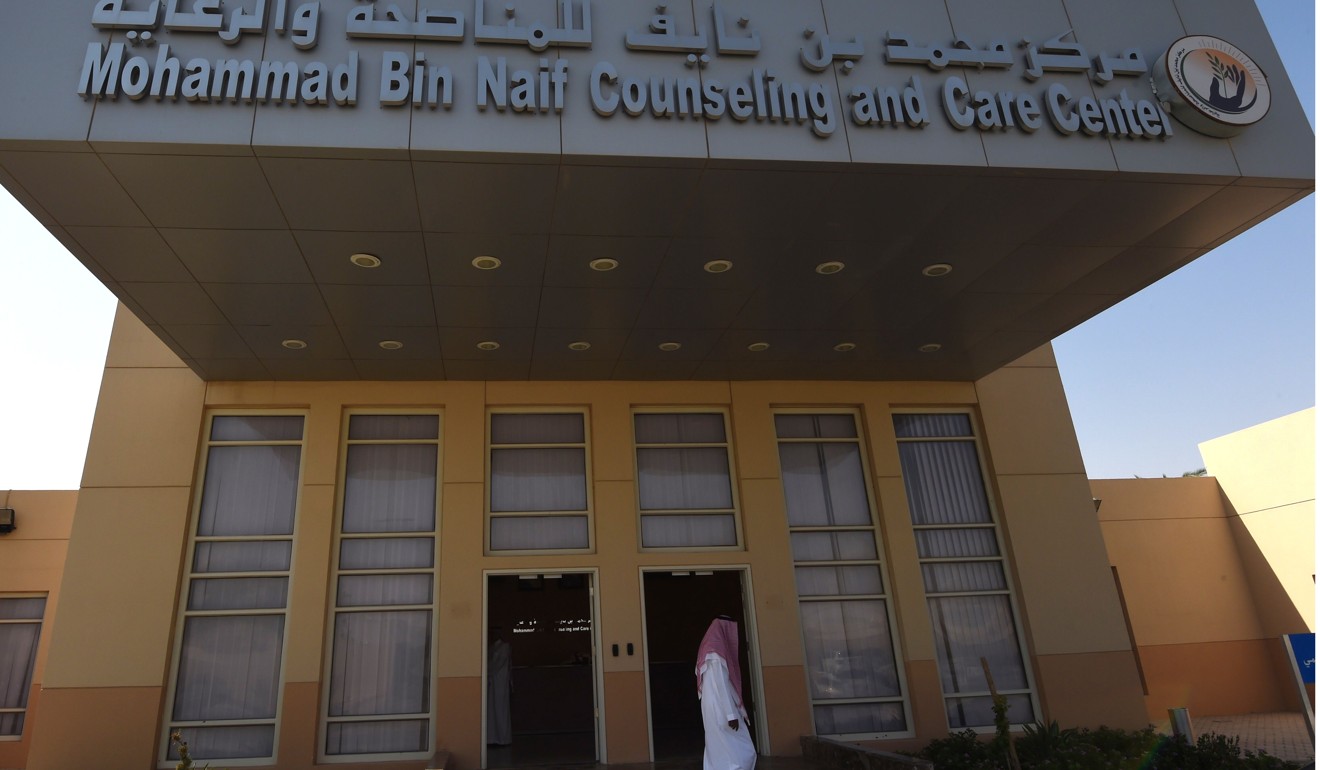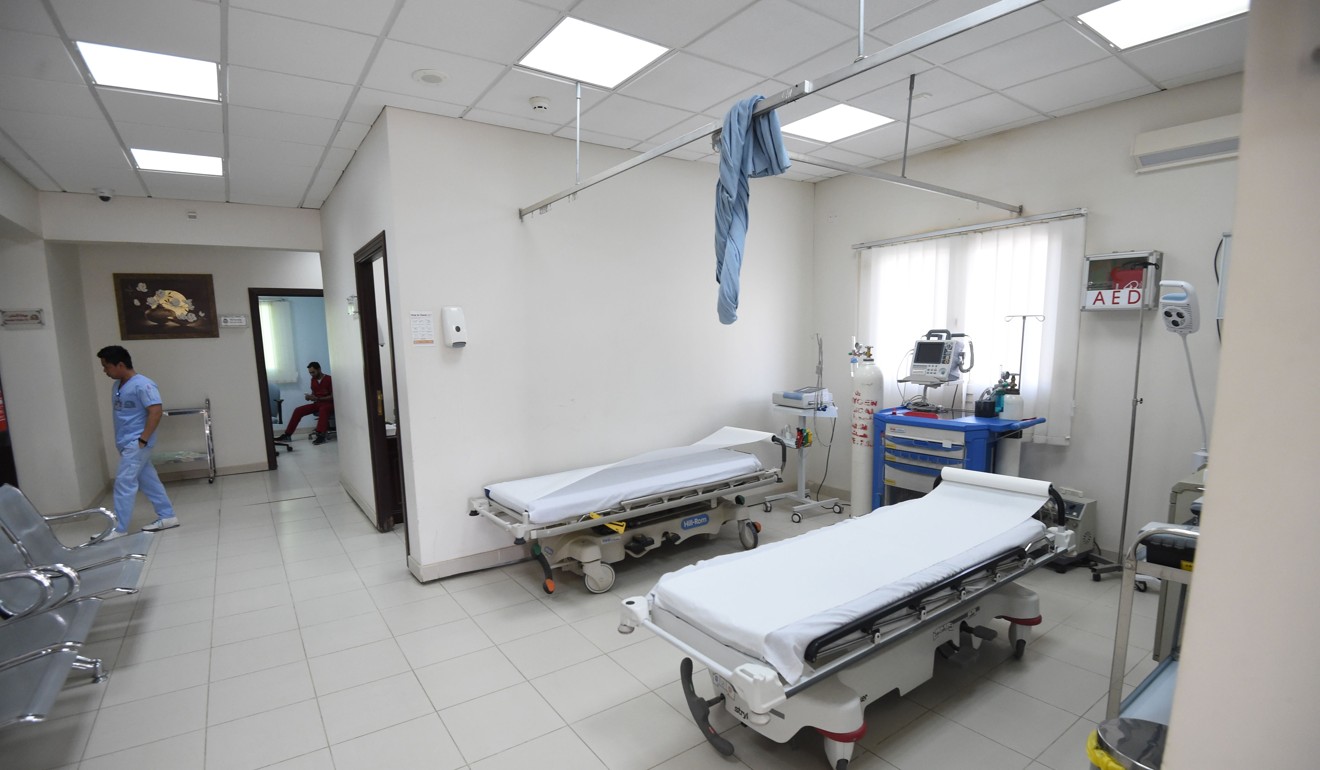
Welcome to Club Jihad: militant Islamists undergo rehab at five-star Saudi centre
With its indoor swimming pool, sun-splashed patios and liveried staff, the Saudi complex has the trappings of a five-star resort, but it is actually a rehab centre – for violent jihadists.
Riyadh’s Mohammed bin Nayef Counselling and Care Centre, a cushy halfway house between prison and freedom, spotlights a controversial Saudi strategy for tackling home-grown extremists.
While the global fight against terrorism is often associated with drone strikes and torture, the philosophy that underpins the centre’s approach is that extremism requires not coercion but an ideological cure.

“Our focus is on correcting their thoughts, their misconceptions, their deviation from Islam,” Yahya Abu Maghayed, a director at the centre, said while giving a golf-cart tour of the sprawling, palm tree-lined complex.
The convicts are housed in a series of low-slung buildings, outfitted with large-screen televisions and king-size beds, all framed by manicured lawns.
You cannot counter terrorism by force. Only ideas can fight ideas
Many linked to groups such as al-Qaeda and the Taliban walk around freely in flowing white robes, and have access to a spacious gym, a banquet hall and furnished flats reserved for visits from spouses.
“We make the ‘beneficiaries’ feel they are normal people and still have a chance – a chance to return to society,” Abu Maghayed said, insisting the centre refrained from calling them prisoners or inmates.
Saudi Arabia, long accused of exporting its ultraconservative Wahhabist Sunni doctrine around the world, is itself a victim of domestic terror attacks.
Crown Prince Mohammed bin Salman, who has sought to roll back the influence of the ultra-conservative religious establishment, this week jump-started a 41-nation military coalition to combat Islamist extremism, vowing to wipe terrorism from the face of the Earth.
But the rehab facility, founded in 2004, is one of the centrepieces of Saudi Arabia’s strategy to expunge violent extremism at home.


Of the remainder, he said, most only showed signs of “deviant behaviour” and only a minuscule number relapsed into violent jihad.
An American terrorism expert who has closely studied the Saudi programme said the recidivism rate was higher, pointing out media reports of graduates from the centre who have showed up on battlefronts.
“Saudis are to be applauded for trying something different – they were one of the first to try a ‘talking cure’ for terrorists,” said John Horgan, another expert at Georgia State University.
“(But) without greater transparency about its participants … it’s impossible to know what value added, if any, this programme brings in reducing the threat of re-engagement in terrorism.”
A journalist was given a chance to interview “beneficiaries” if they agreed, but when two bearded, gym-buffed men were approached in their living quarters, they declined to talk.

But Saudi officials say the threat of sanction is always hanging over them.
Those who refuse to reform after a minimum stay of three months at the centre are returned to “the judicial process”, Abu Maghayed said.
But more than coercion, the centre pushes for increasing familial bonds, encouraging marriage and children, a psychological tether meant to make it harder to return to violent ways.
“You cannot counter terrorism by force,” said Ali al-Afnan, an educational psychology specialist at the centre. “Only ideas can fight ideas.”
The centre uses art therapy as one of its tools. Comparisons between portraits in the early days of incarceration and those at later stages are used as a metric to study inmates’ frame of mind.
Abu Maghayed showed one early painting, which he said depicted a gloomy “Guantánamo mentality” – with splashes of orange, the colour of jumpsuits at the infamous prison.
Another canvas painted weeks later showed bold brushstrokes and sparks of colour, supposedly depicting hope.
As Afnan spoke, he fielded an abrupt telephone call from a former “beneficiary” who once travelled to Afghanistan to fight alongside the Taliban.
Now married and with children, he was seeking advice from Afnan over returning to university for a graduate programme.
“This man is our role model,” Afnan said after hanging up. “A shining example of how people deserve a second chance.”

.png?itok=arIb17P0)